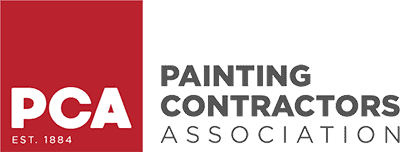Painting a fence may seem like a straightforward weekend project, but without the right approach, it can quickly turn into a messy, frustrating experience. That’s why many homeowners end up calling in professional fence painters. But if you’re determined to do it yourself and want to keep things clean, this guide on mess-free fence painting is just what you need.
Key Takeaways:
- Use proper prep work to avoid unnecessary clean-up.
- Choose the right tools for a neater paint job.
- Learn techniques that professional fence painters use.
- Know how to protect your surroundings.
- Discover the best time and conditions for painting.

Why Does Fence Painting Get So Messy?
Painting a fence gets messy for a few key reasons. Understanding these common issues can help you avoid them and achieve a cleaner, more efficient job. Here’s why messes tend to happen:
- Lack of preparation: Jumping straight into painting without cleaning or prepping the surface can lead to uneven paint adhesion, drips, and peeling. Dirt and debris get trapped under the paint and ruin the finish.
- Using the wrong tools: Cheap or incorrect tools often lead to sloppy results. Low-quality brushes may shed bristles, and improper rollers or sprayers can cause splatters or uneven coverage.
- Poor technique: Fast, random strokes or overloading your brush can result in drips and streaks. Without methodical application, paint can pool or run.
- Environmental factors: Wind can carry paint mist and splatter onto unintended surfaces, while direct sunlight can cause the paint to dry too quickly and leave marks.
- No game plan: Working without a strategy or jumping between areas creates inconsistency and increases the likelihood of mistakes, making cleanup harder later on.
Prep Like a Pro
Before you open that paint can, make sure your surface is ready. Proper preparation is one of the most important steps in achieving a clean, professional-looking paint job. Here’s how to do it right:
- Clean the fence thoroughly: Use a hose or pressure washer to remove dirt, dust, and cobwebs. For stubborn grime or mildew, scrub with a solution of water and mild detergent.
- Remove old or peeling paint: Use a paint scraper or wire brush to get rid of flaking paint. This helps the new paint stick better and creates a smooth finish.
- Sand rough spots: Use sandpaper or a sanding block to smooth out any uneven areas or splinters. This step ensures an even coat of paint and prevents drips.
- Protect nearby areas: Cover nearby plants, walkways, decks, and outdoor furniture with plastic sheeting or drop cloths. This keeps paint splatter from ruining your landscape or hardscaping.
- Mask off areas you don’t want painted: Use painter’s tape to protect hardware, edges, or parts of the fence you want to keep paint-free. This adds polish to the final result and reduces the need for touch-ups.
Tools Matter More Than You Think
When it comes to painting a fence without making a mess, the tools you choose can make all the difference. Using the right equipment helps you maintain control and achieve a clean, even finish. Here are the essential tools and tips for getting it right:
- High-quality brushes: Invest in durable, well-made brushes specifically designed for exterior painting. They offer better paint control, smoother application, and won’t shed bristles mid-project.
- Proper rollers: Use rollers that are intended for rough surfaces like wood or textured fencing. These hold more paint and distribute it more evenly, reducing the chances of streaks or drips.
- Paint sprayer (for speed): A paint sprayer can dramatically speed up your work, especially on large or complex fences. However, it requires practice and a steady hand to avoid overspray and uneven layers.
- Spray shield: If you choose to use a sprayer, a spray shield helps contain the paint mist and keeps it from landing on unwanted surfaces like plants, patios, or siding.
- Painter’s tape: Use painter’s tape to protect any hardware, edges, or adjoining surfaces. It ensures crisp lines and minimizes the need for clean-up afterward.
- Extension poles and ladder: These help you reach all areas of the fence safely and comfortably, maintaining precision and reducing fatigue.
Choosing quality tools up front not only improves the look of your finished fence but also keeps the mess to a minimum.
Techniques for a Cleaner Job
Professional fence painters don’t just start slapping paint on the wood. They follow a series of best practices that help them produce clean, even results without leaving a mess behind. Here’s a breakdown of the techniques that can help you do the same:
- Start from the top: Always begin painting at the top of the fence and work your way down. This prevents drips from ruining freshly painted areas below.
- Use long, even strokes: Whether you’re using a brush or roller, apply paint in long, consistent strokes. This technique helps avoid streaks and provides a more uniform finish.
- Don’t overload your brush or roller: Dipping too deeply into the paint or oversaturating your applicator leads to drips and runs. Instead, load a moderate amount of paint and tap off the excess.
- Maintain a steady pace: Rushing leads to uneven coverage, while going too slowly can result in visible overlap marks. Aim for a smooth, continuous rhythm.
- Keep a consistent spraying distance: If you’re using a paint sprayer, hold the nozzle about 6–12 inches away from the surface. Moving in even, horizontal lines at a steady speed prevents blotches and overspray.
- Overlap slightly: Each pass should slightly overlap the last to ensure even coverage and eliminate missed spots.
By following these techniques, you’ll replicate the polished look that professional fence painters achieve—without the mess.

Timing Is Everything
Timing your fence painting correctly can significantly reduce mess and ensure a smooth, professional finish. Environmental conditions affect how the paint adheres, dries, and ultimately looks. Here’s what to keep in mind:
- Avoid windy days: Even a light breeze can carry paint mist through the air, causing unintended splatter on surrounding areas like siding, plants, or furniture.
- Opt for overcast skies: Cloudy weather prevents direct sunlight from drying the paint too quickly. This gives the paint time to level out, reducing brush marks and streaks.
- Steer clear of peak heat: Hot temperatures, especially in direct sunlight, can cause paint to bubble, peel, or dry unevenly. It also makes the work uncomfortable and rushed.
- Paint in the early morning or late afternoon: These times usually offer milder temperatures and less intense sunlight, allowing for better paint application and curing.
- Watch humidity levels: While moderate humidity is fine, high moisture in the air can prolong drying time and attract dust or debris to wet paint.
Choosing the right time of day and the best weather conditions helps avoid mess and ensures your paint job lasts longer.
Keep Clean-Up Simple
Cleaning up during and after painting doesn’t have to be a hassle. By staying organized and acting quickly when messes happen, you can keep your work area tidy and stress-free. Here are some practical tips to make clean-up simple:
- Keep a bucket of soapy water and clean rags nearby: This allows you to quickly wipe up any accidental drips or spills before they dry and become harder to remove.
- Address spills immediately: The faster you act, the easier it is to clean up paint from unintended surfaces. Letting paint dry only increases the difficulty of removal.
- Store paint cans on a tarp: Even a minor spill from a can can stain patios or grass. Using a tarp keeps your workspace clean and makes transporting cans easier.
- Seal brushes and rollers in plastic during breaks: Wrapping them in plastic wrap or placing them in a plastic bag keeps them moist, preventing the paint from drying out and forming clumps.
- Dispose of waste responsibly: Old rags, empty cans, and used painter’s tape should be discarded properly. Look up local regulations for paint disposal to ensure you’re following environmental guidelines.
With these habits, you’ll minimize the mess and make end-of-day clean-up a breeze.
When to Call the Pros
Sometimes, mess-free fence painting isn’t worth the hassle. If your fence is especially large, intricate, or in poor shape, professional fence painters might be your best bet. They bring experience, equipment, and efficiency that can save you time and clean-up.
Wrapping Up
Painting a fence doesn’t have to mean paint splatters, ruined clothes, and hours of clean-up. With the right prep, tools, and techniques, you can achieve a professional-looking finish without the mess. And if you find the project too daunting, remember that Woodiwiss Painting is just a call away. Contact us at 925-489-0941 to schedule your fence painting and get the clean, sharp look your yard deserves.



